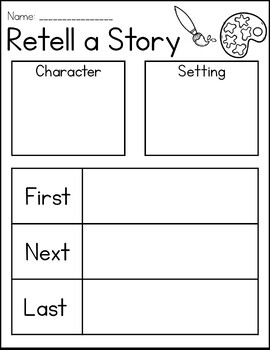Dot Day Activities for The Dot
Creatively Teaching First
13.4k Followers
Grade Levels
K - 2nd
Subjects
Resource Type
Standards
CCSS1.OA.C.6
CCSSRL.1.2
CCSSRL.1.3
Formats Included
- PDF
Pages
21 pages
Creatively Teaching First
13.4k Followers
What educators are saying
My students loved using these resources for Dot Day this year! Super easy to pick and choose what you'd like to use and super easy to prep the activities. I will definitely be using these for future Dot Days as well!
I loved using this resource on dot day with my students. They loved completing all the activities. I love how hands on some of the activities were. Kept my littles engaged in their learning! Thank you so much for a great resource!
Description
These DOT activities are perfect to celebrate Dot Day and/or to use with the book, The Dot written by Peter H. Reynolds. This is such a fun resource that incorporates literacy, math, STEM, and creative arts!
Includes the Following:
- Dot Day Coloring Page
- Dot Day STEM Challenge - 3 options
- Make Your Mark Creative Circle
- What to do with a Dot? Writing - 3 options
- Dot Candy Graphing
- Dot Candy Sorting and Tally Chart
- The Dot Character Study Comprehension
- The Dot Character Changes Comprehension
- The Dot Retell Comprehension - 2 options
- Addition to 10 - using paint dots and ten frames
- Beautiful Mistakes - Growth Mindset
Total Pages
21 pages
Answer Key
N/A
Teaching Duration
N/A
Last updated 9 months ago
Report this resource to TPT
Reported resources will be reviewed by our team. Report this resource to let us know if this resource violates TPT’s content guidelines.
Standards
to see state-specific standards (only available in the US).
CCSS1.OA.C.6
Add and subtract within 20, demonstrating fluency for addition and subtraction within 10. Use strategies such as counting on; making ten (e.g., 8 + 6 = 8 + 2 + 4 = 10 + 4 = 14); decomposing a number leading to a ten (e.g., 13 - 4 = 13 - 3 - 1 = 10 - 1 = 9); using the relationship between addition and subtraction (e.g., knowing that 8 + 4 = 12, one knows 12 - 8 = 4); and creating equivalent but easier or known sums (e.g., adding 6 + 7 by creating the known equivalent 6 + 6 + 1 = 12 + 1 = 13).
CCSSRL.1.2
Retell stories, including key details, and demonstrate understanding of their central message or lesson.
CCSSRL.1.3
Describe characters, settings, and major events in a story, using key details.





